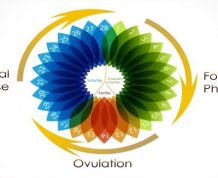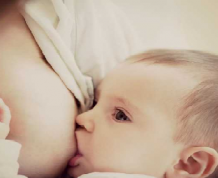In couples facing difficulties in conceiving a baby, female infertility determines this in approximately 40 percent of the cases. Specifically, fertility problems in women are quite common these days, as 10 percent of the women who try to get pregnant experience obstacles. Claim Your 20 Free Pregnancy Tests – Click Here
In case tests show nothing wrong, doctors classify infertility as unexplainable and ascribe it to over or underweight, toxin contamination and improper diet. However, infertility is usually tracked in the tests and it has several causes. Here are the most frequent fertility problems in women.

Endometriosis appears when the endometrial tissue from the uterine layer does not grow in the uterus, but in the pelvis. It usually arises with no obvious symptom, but sometimes women encounter pain during their menstruation or intercourse.
Endometriosis can be treated with fertility drugs or through artificial insemination; also, surgical action might be necessary in order to remove anomalous tissue. Furthermore, ART (Assisted Reproduction Technologies) like IVF or Zygote Transfer might be needed. The treatments enumerated normally have a success rate of 20 to 50 percent.

Poor egg quality arises due to chromosomal anomalies of the eggs, which results in the inability to support pregnancy. The symptoms are not visible and there are few, but precise things women can do to get over this problem: IVF with the help of egg or embryos donors. The good news is that the success rate is high, respectively between 30 to 50 percent. If this does not work, there is no choice but to revert to adoption.

Ovulation issues refer to hormonal dysfunctions, which do not allow mature eggs to be released from the ovaries. The symptoms are often non-observable or irregular, but in some cases women deal with atypical bleeding (too much or too little). The solutions to this problem are fertility drugs and IVF. 70 to 90 percent of the women manage to normally ovulate after treatment and 20 to 60 become able to conceive.

Sperm allergy is quite rare, affecting only 2 percent of the female population, but this is why women should be aware of it; when nothing else adds up, sperm allergy might be the problem. In this case, the women’s body produces antibodies which destroy the spermatozoids. Artificial insemination or ART turn out a success rate of 20 to 40 percent.

Fallopian tubes blockage prevents the sperm from reaching the egg and also the fertilized egg to get into the uterus. This problem can be resolved through surgical interventions or through IVF if the tubes cannot be unblocked. The success rate is highly variable, from 20 to 60 percent chances of getting pregnant.

Polycystic ovarian syndrome (PCOS) increases the chances of miscarriage, for the ovaries do not grow big enough. Women suffering from this have irregular menstruations, obesity and acne. With fertility drugs and the improvement of lifestyle and diet, the chances to ovulate increase by 70 percent and the success rate for pregnancy is between 20 and 40 percent.
To conclude, it is evident that women may be confronted with a great deal of fertility issues. Some of them are common and easily detected, but some do not have visible symptoms and this is why women should firstly pay attention to their diet and general health in order not to complicate their fertility problems.










Comments